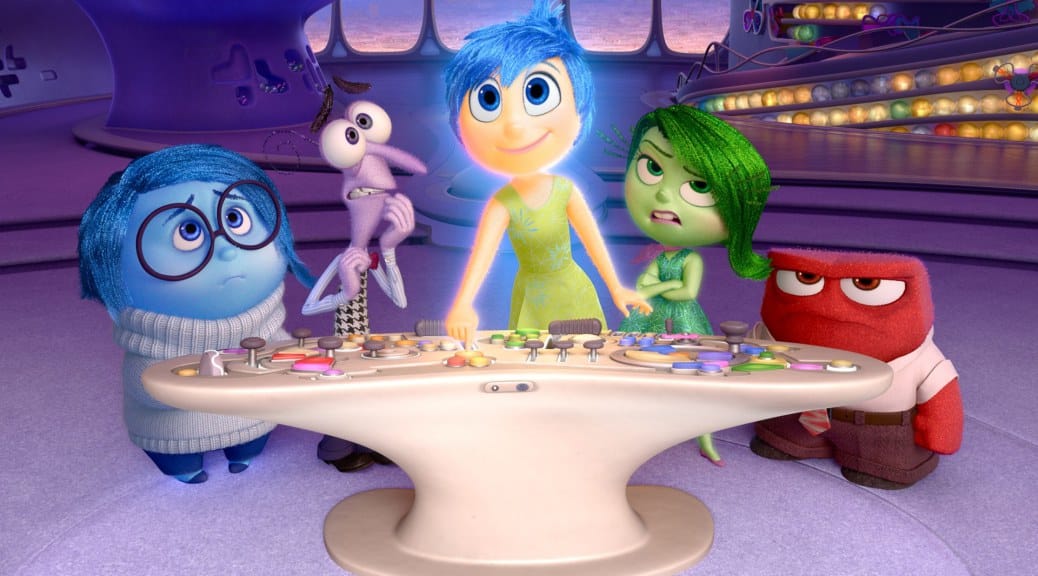Summer Hit "Inside Out" Pulls Heartstrings and Delivers Laughs

“Inside Out” could not have been released at a more perfect time. After a trend of lackluster sequels to older movies, such as “Cars” and “Monster’s, Inc.”, the animation juggernaut’s 15th movie struck gold in a true return to form.
The film travels inside the head of 11-year-old Riley (Kaitlyn Diaz), introducing viewers to the personified emotions that inhabit her mind: Joy (Amy Poehler), Fear (Bill Hader), Disgust (Mindy Kaling), Anger (Lewis Black) and Sadness (Phyllis Smith). When Joy and Sadness are accidentally ejected from the Headquarters, the other emotions take the wheel. Riley becomes your basic teenager full of attitude, but Joy is determined to restore her happiness.
The one thing that immediately jumped out at me in the theater was the world of Riley’s mind. In all of its previous movies, Pixar has limited itself to settings that closely resembled reality. Setting the action in the human mind allows the animation team to get creative, crafting an incredibly vibrant and imaginative world. For instance, when the characters enter the world of Abstract Thought, they shape shift from cubist figures, to two dimensional silhouettes, to line drawings. Wacky environments like Riley’s subconscious (where her deep fear of clowns lodges), long-term memory vault and train of thought (which is a literal train) are all put on display for our viewing pleasure.
I would definitely recommend multiple viewings to fully appreciate the minute details in the film, particularly the emotions’ physical shapes. There’s something captivating about the way Anger’s head smolders and Joy’s skin bubbles and glows. The animators produced stunning results that are pleasing to eye and propeling the story forward.
The story is your typical Pixar fare, with familiar tropes like family love and a hectic chase scene making appearances. However, the fantastic settings and the stellar cast insures that the audience remains engaged. Poehler employs the undefeatable optimism of Leslie Knope from “Parks and Recreation,” Bill Hader provides ample comic relief in the Headquarters and Smith’s portrayal of sadness is so authentic you would think she was depressed while recording her lines. The script is one of Pixar’s funniest, with a healthy balance of physical comedy and clever dialogue. The peeks into other character’s minds are especially hilarious. Make sure to stick around for the credits in order to catch a hilarious glimpse inside other people and even animals’ minds!
There is one very divisive character in “Inside Out”: the forgotten imaginary friend known as Bing-Bong (Richard Kind). On paper, he works well as a good old-fashioned sidekick. Still, he sometimes crosses the thin line between funny and annoying. While I personally enjoyed him, many I’ve talked to about the movie have absolutely despised him, saying that he brought the whole film down a level. Someone even compared him to Jar-Jar Binks. While he may not be everyone’s favorite, there is no doubt that his selfless sacrifice in the movie’s final act is especially tragic.
Even though “Inside Out” has many hilarious moments, you could argue that the plot is just one heartbreaking moment after another. This movie is one of Pixar’s more adult films, despite being set in the mind of a young child. Emotionally vulnerable people beware: This is the biggest smack in the face since “Up.” The emotional complexity shows just how far Pixar has come since movies like “Toy Story,” which dealt with simpler themes, such as separation anxiety.
This movie tackles more difficult realities, like the danger of bottling up emotions, the eventuality of sadness creeping more and more into our lives as we grow up and the fact that a parent’s days with happy-go-lucky kids are numbered. The material is so intense that at times, it feels like the tough reality of the message might overtake the kid-friendliness of the movie. Then again, as “Inside Out” tells us, kids are a lot smarter than we give them credit for. Keep in mind that since its beginning, Pixar has refused to talk down to its audience. If anyone can use the power of imagination to open kids’ minds, it’s the creative geniuses behind some of the greatest animated films of all time.
There is no doubt in my mind that “Inside Out” has earned a place in the Pixar hall of fame. The colorful world looks like the result of a serious head-trip and the story that brings it to life is poignant and thoughtful. Just shy of being completely emotionally devastating, this educational look at emotions is something I’ll be showing my own children someday. Who knew that you could make a work of art out of cognitive processes?





Comments ()